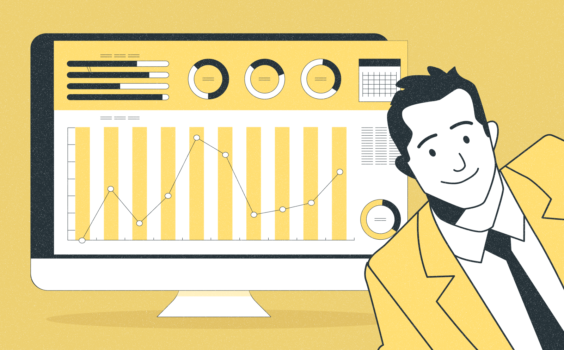What Is Digital Decluttering?
Digital decluttering is the process of organizing, streamlining, and removing unnecessary digital content and assets to improve productivity, reduce stress, and enhance digital well-being. Key benefits include improved focus, increased efficiency, and better data management.
In our increasingly digital world, the concept of decluttering has expanded beyond physical spaces to encompass our virtual environments. Digital decluttering, a term that's gained significant traction in recent years, refers to the systematic process of organizing, streamlining, and removing unnecessary digital content and assets. This practice aims to create a more manageable and efficient digital ecosystem, ultimately leading to improved productivity, reduced stress, and enhanced overall digital well-being.
The Need for Digital Decluttering
As we navigate through 2024, the average person interacts with an unprecedented amount of digital information daily. From emails and documents to social media posts and digital photos, our devices are constantly bombarded with data. This digital overload can lead to several issues:
- Decreased productivity due to information overload
- Increased stress and anxiety from managing multiple digital platforms
- Difficulty in finding important information when needed
- Reduced device performance due to cluttered storage
- Potential security risks from outdated or unnecessary files and applications
Recognizing these challenges, many individuals and organizations are turning to digital decluttering as a solution. A study by the National Association of Productivity and Organizing Professionals (NAPO) found that 54% of professionals report spending more time looking for documents and information than actually using them productively. This statistic alone underscores the critical need for effective digital organization strategies.
Key Areas of Digital Decluttering
Digital decluttering encompasses various aspects of our digital lives. Here are some primary areas that often require attention:
| Area | Description | Common Issues |
| Email Management | Organizing inbox, archiving, and deleting unnecessary emails | Inbox overflow, missed important messages |
| File Organization | Structuring digital files and folders logically | Duplicate files, difficulty locating documents |
| Cloud Storage | Optimizing use of cloud services and managing shared content | Redundant backups, security concerns |
| Social Media | Curating online presence and managing digital connections | Information overload, privacy issues |
| App Management | Removing unused applications and organizing app data | Device clutter, unnecessary notifications |
| Digital Subscriptions | Reviewing and canceling unused digital services | Forgotten subscriptions, unnecessary expenses |
Benefits of Digital Decluttering
Implementing a comprehensive digital decluttering strategy can yield numerous benefits:
- Improved Focus and Productivity: By reducing digital distractions, individuals can better concentrate on important tasks.
- Enhanced Digital Security: Regularly reviewing and removing unnecessary files and applications can reduce potential security vulnerabilities.
- Better Time Management: Organized digital spaces allow for quicker access to information, saving valuable time.
- Reduced Stress: A clutter-free digital environment can lead to reduced anxiety and a sense of control over one's digital life.
- Increased Device Performance: Removing unnecessary files and applications can improve device speed and efficiency.
- Cost Savings: Identifying and canceling unused subscriptions or services can result in significant financial savings.
A recent survey by Wakefield Research for Asana revealed that knowledge workers spend an average of 67 minutes per day searching for information across various applications. By implementing effective digital decluttering strategies, this time could be significantly reduced, potentially saving organizations millions in productivity costs annually.
Digital Decluttering Techniques
To effectively declutter your digital space, consider the following techniques:
1. Implement the 4D Method
The 4D method is a popular approach to managing digital content:
- Delete: Remove unnecessary files, emails, or applications.
- Do: Take immediate action on urgent items.
- Defer: Schedule non-urgent tasks for later.
- Delegate: Assign tasks to others when appropriate.
2. Establish a Consistent File Naming Convention
Create a standardized system for naming files and folders. This could include elements such as date, project name, and version number. For example: "2024-09-24_DigitalDecluttering_v1.0"
3. Utilize the Two-Minute Rule
If a task takes less than two minutes to complete, do it immediately rather than deferring it. This principle, popularized by productivity expert David Allen, can prevent the accumulation of small, unfinished tasks.
4. Conduct Regular Digital Audits
Schedule periodic reviews of your digital assets. This could be monthly for personal use or quarterly for businesses. During these audits, assess the necessity of files, applications, and subscriptions.
5. Leverage Automation Tools
Utilize automation tools and AI-powered assistants to streamline repetitive tasks. For instance, email filters can automatically sort incoming messages, while tools like IFTTT (If This Then That) can automate file organization across platforms.
Pro Tip: When decluttering your digital space, always ensure you have proper backups of important data. While the goal is to reduce clutter, you don't want to accidentally delete crucial information in the process.
Digital Decluttering in the Workplace
In professional settings, digital decluttering takes on added importance. A study by IDC found that companies lose an average of £15,000 (approximately $19,000 USD) per worker annually due to time wasted searching for information and recreating existing content. Implementing effective digital decluttering strategies can significantly reduce these losses and improve overall organizational efficiency.
Best Practices for Workplace Digital Decluttering
- Establish Clear Policies: Develop and communicate clear guidelines for digital asset management across the organization.
- Provide Training: Offer regular training sessions on digital organization techniques and tools.
- Implement Collaborative Tools: Utilize project management and collaboration platforms to centralize information and reduce email clutter.
- Regular Clean-up Days: Schedule company-wide digital decluttering days to encourage collective organization efforts.
- Invest in Enterprise Search Solutions: Implement powerful search tools to help employees quickly locate information across various platforms.
According to a report by McKinsey, employees spend 1.8 hours every day—9.3 hours per week, on average—searching and gathering information. By implementing these best practices, organizations can reclaim a significant portion of this time, leading to substantial productivity gains.
The Future of Digital Decluttering
As we look ahead, the field of digital decluttering is likely to evolve in response to emerging technologies and changing work patterns. Some trends to watch include:
- AI-Powered Organization: Artificial intelligence will play an increasingly significant role in automating digital organization tasks.
- Integration of Physical and Digital Decluttering: As the lines between physical and digital workspaces blur, we may see more holistic approaches to organization.
- Focus on Digital Minimalism: There's a growing movement towards digital minimalism, emphasizing quality over quantity in digital interactions.
- Enhanced Data Privacy Tools: With growing concerns about data privacy, we can expect more sophisticated tools for managing and protecting personal digital information.
A report by Gartner predicts that by 2025, 80% of enterprises will have adopted AI-powered tools to assist with digital decluttering and information management, up from less than 30% in 2023.
Remember: Digital decluttering is not a one-time event but an ongoing process. Regular maintenance is key to maintaining a organized and efficient digital environment.
Challenges in Digital Decluttering
While the benefits of digital decluttering are clear, implementing and maintaining these practices can present several challenges:
| Challenge | Description | Potential Solution |
| Time Investment | Initial decluttering can be time-consuming | Start with small, manageable tasks and gradually expand |
| Emotional Attachment | Difficulty letting go of digital assets | Set clear criteria for what to keep and what to discard |
| Technological Barriers | Lack of familiarity with organizational tools | Invest in training and choose user-friendly solutions |
| Maintaining Consistency | Keeping up with decluttering practices long-term | Establish routines and use reminders for regular maintenance |
| Balancing Access and Security | Ensuring data is accessible yet secure | Implement robust access control and encryption measures |
Addressing these challenges requires a combination of technological solutions, behavioral changes, and organizational support. It's important to recognize that digital decluttering is an iterative process, and perfection should not be the goal. Instead, focus on continuous improvement and adapting strategies as needed.
Measuring the Impact of Digital Decluttering
To truly understand the value of digital decluttering efforts, it's crucial to measure their impact. Here are some key performance indicators (KPIs) that can be used to assess the effectiveness of digital decluttering initiatives:
- Time Savings: Track the time spent searching for information before and after implementing decluttering strategies.
- Storage Utilization: Monitor changes in storage usage across devices and cloud platforms.
- Employee Satisfaction: Conduct surveys to gauge improvements in digital workspace satisfaction.
- Productivity Metrics: Measure changes in task completion rates and overall productivity.
- IT Support Requests: Monitor reductions in support tickets related to file management or device performance issues.
A study by the Information Overload Research Group found that implementing effective digital organization strategies can lead to a 30% reduction in time spent searching for information and a 25% increase in overall productivity.
Conclusion
Digital decluttering has emerged as a critical practice in our increasingly digital world. By systematically organizing and streamlining our digital assets, we can significantly enhance productivity, reduce stress, and improve overall digital well-being. While the process may seem daunting at first, the long-term benefits far outweigh the initial investment of time and effort.
As we continue to navigate the complexities of the digital age, the ability to effectively manage our digital environments will become an increasingly valuable skill. Whether in personal or professional contexts, mastering the art of digital decluttering is sure to yield substantial rewards in efficiency, clarity, and peace of mind.
Remember, the goal of digital decluttering is not to achieve a perfect, minimalist digital life, but rather to create a more manageable and efficient digital ecosystem that supports your needs and goals. Start small, be consistent, and don't be afraid to adapt your strategies as your digital landscape evolves.
"The secret of getting ahead is getting started. The secret of getting started is breaking your complex overwhelming tasks into small manageable tasks, and then starting on the first one." – Mark Twain
This quote, while not specifically about digital decluttering, encapsulates the approach needed to tackle this seemingly overwhelming task. By breaking down the process into manageable steps and consistently applying decluttering principles, anyone can achieve a more organized and efficient digital life.


